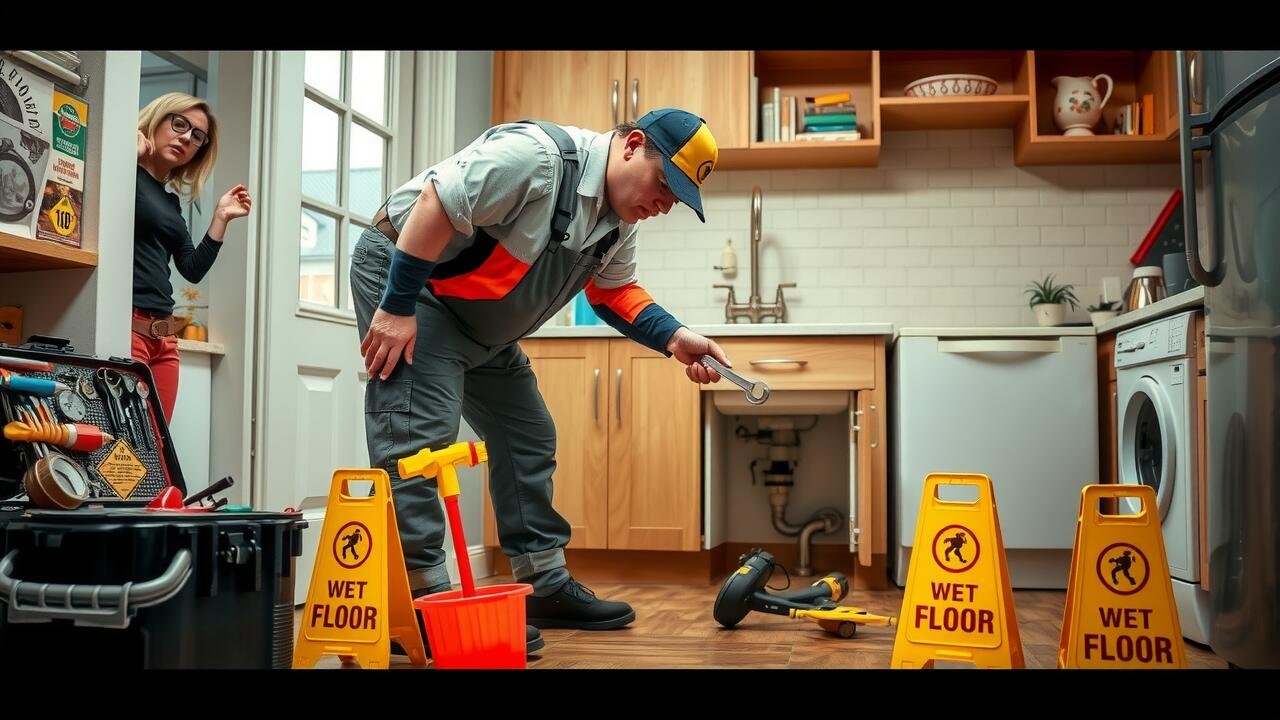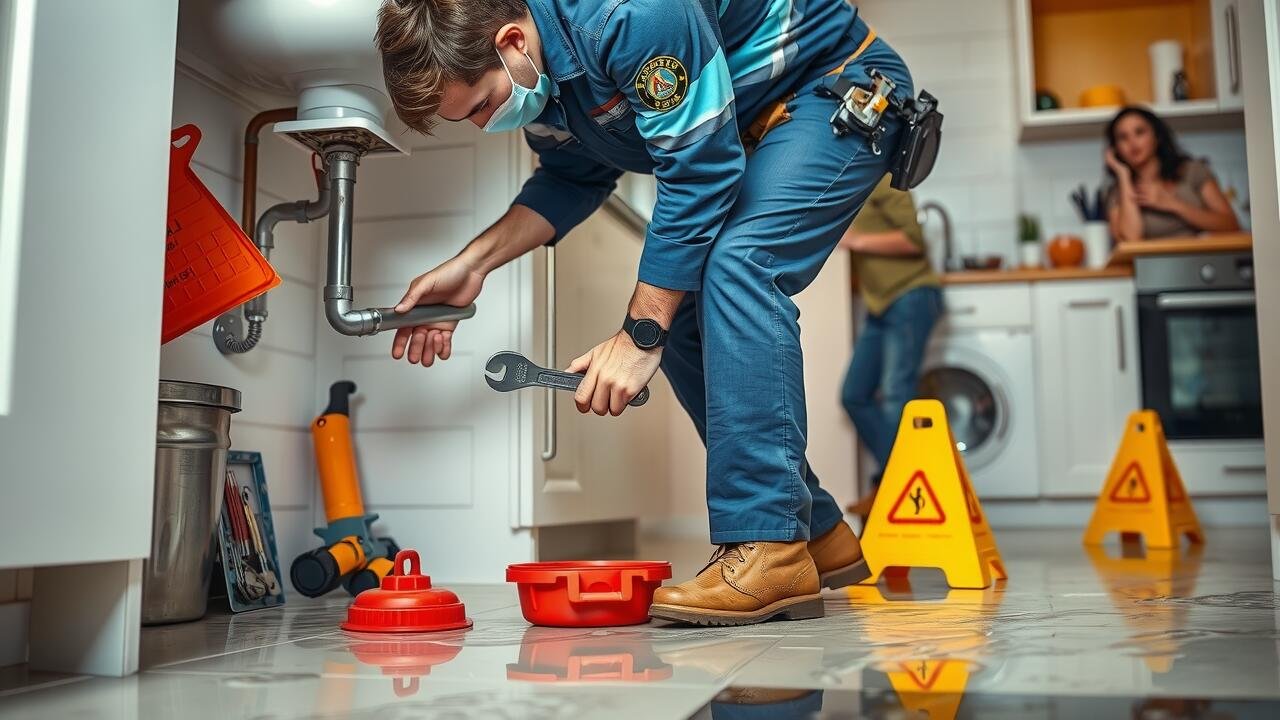
Emergency Preparedness for Water Loss
Being prepared for the possibility of losing running water can significantly ease the burden when such an emergency arises. Homeowners should create a detailed plan that outlines steps to take during a water outage. This includes storing an adequate supply of bottled water, maintaining water-saving devices, and keeping a list of essential contacts like an Emergency Plumber Fremont, California. Understanding local resources can also be beneficial, as some municipalities provide emergency water supplies during severe outages.
Regularly assessing plumbing systems and fixtures can help minimize the risk of unexpected water loss. Home inspections should include checking for leaks and ensuring that pipes are in good condition. In addition to preventative measures, having an emergency toolkit can be helpful. Tools for shutting off water lines and a supply of emergency plumbing materials can expedite repairs if problems arise. Preparing in advance will help mitigate the stress and complications related to sudden water loss.
Creating a Contingency Plan
Creating a contingency plan involves assessing your household’s water needs and potential sources of water loss. Start by determining how much water your family uses on a daily basis for drinking, cooking, bathing, and sanitation. This information helps in estimating how long you can manage without running water. Consider your local area’s susceptibility to water outages, whether due to infrastructure issues, natural disasters, or other emergencies. Including contact information for local services, such as an Emergency Plumber Fremont, California, can provide quick access to assistance if necessary.
Next, identify alternative sources of water that can be tapped in the event of an outage. Stocking up on bottled water is a common first step. Assess your property for any cisterns, water tanks, or even rain barrels that might serve as backup supplies. It’s essential to be aware of how to disinfect any water sources you plan to use during an emergency. Engage your family in discussions about the plan. Ensure everyone understands where water supplies are stored and the steps to take in case of an emergency. Having a clear and communicated plan can significantly alleviate stress during difficult situations.
Alternative Water Sources During an Outage
During an outage, identifying alternative water sources can be crucial for maintaining basic needs. Stored bottled water serves as a reliable option for drinking and cooking. Rainwater harvesting is another viable solution, provided that proper collection and filtration methods are employed to ensure safety.
For more immediate needs, natural sources like streams or ponds may be accessible but require thorough purification treatments to eliminate contaminants. Local resources can also play a pivotal role. Reaching out to professionals like an Emergency Plumber Santa Clara, California, can provide guidance on securing water supplies during emergencies.
Identifying Safe Water Supplies
During a water supply outage, identifying safe water sources becomes crucial. Tap water is typically safe for drinking and cooking, but during emergencies, it may not be reliable. If running water is cut off, turn to bottled water from local stores or use water collected from rain or snow. In areas prone to contamination, boiling water or using water purification tablets can help ensure safety. Always check for advisories from local health departments regarding the safety of any alternative sources before consumption.
Emergency Plumber Fremont, California, can provide guidance on accessing alternative water supplies in critical situations. When considering wells or other natural sources, ensure they meet safety standards to avoid illness. Being aware of local water supply resources, including community programs or shelters that may offer safe drinking water, can alleviate some concerns during a water outage. It’s essential to have a plan in place and know where to turn for help when needed.
Steps to Take When Running Water is Cut Off
When running water is cut off, the first step is to assess the situation. Check for any visible leaks or issues within your plumbing system. This may help identify whether it is an isolated problem or a larger issue impacting multiple areas. Document any observable signs, as this information can be crucial when seeking professional assistance.
If the water loss seems extensive or beyond your control, contact an emergency plumber in Santa Clara, California. They can provide immediate support and address plumbing issues. Keep in mind that any disruption in water supply can lead to further complications, such as sanitation problems or damage to your property. Prompt action is essential to mitigate these risks.
Immediate Actions to Ensure Safety
Disruption of running water can pose significant risks to health and safety. Prioritize securing an alternative water supply, such as bottled water or stored water in jugs. Assess the immediate area for any potential leaks or sources of contamination that could affect your remaining water supply. These actions serve as a first line of defense against dehydration or the spread of waterborne illnesses. Document any issues or changes in water quality for later reference.
If the situation becomes critical, engaging professional assistance is essential. Contacting an Emergency Plumber in Santa Clara, California, can provide expert guidance on handling the disruption. They are equipped to assess plumbing issues, recommend repairs, and ensure that your water system is restored safely and efficiently. Quick action can help minimize the impact of an emergency and safeguard the health of all household members.
FAQS
Is no running water considered an emergency?
Yes, no running water can be considered an emergency, especially if it lasts for an extended period. It can affect hygiene, food preparation, and overall health and safety.
What should I include in my contingency plan for water loss?
Your contingency plan should include identifying alternative water sources, ensuring access to bottled water, and having a strategy for hygiene and sanitation during an outage.
What are some alternative water sources I can use during an outage?
Alternative water sources can include bottled water, water from natural sources like rivers or lakes (after proper purification), stored rainwater, or water from your hot water heater.
How can I identify safe water supplies when running water is unavailable?
Safe water supplies can be identified by checking bottled water labels for safety certifications, using water purification tablets for natural sources, and ensuring any collected water is treated before consumption.
What immediate actions should I take when my running water is cut off?
Immediate actions include conserving any remaining water, using bottled water for drinking and hygiene, contacting your water provider for assistance, and following guidance from local authorities regarding water quality and safety.


